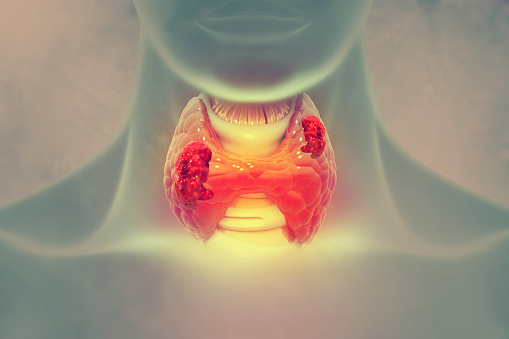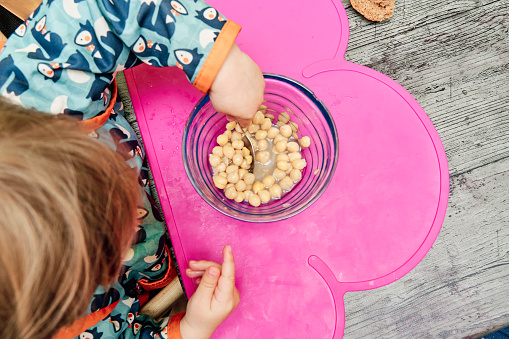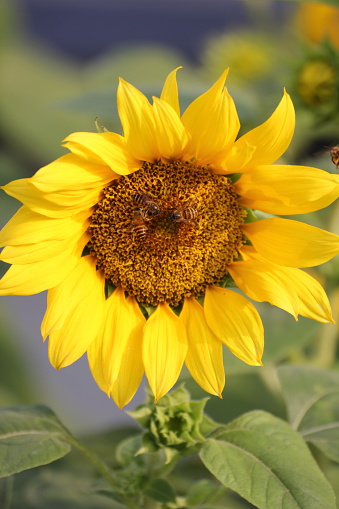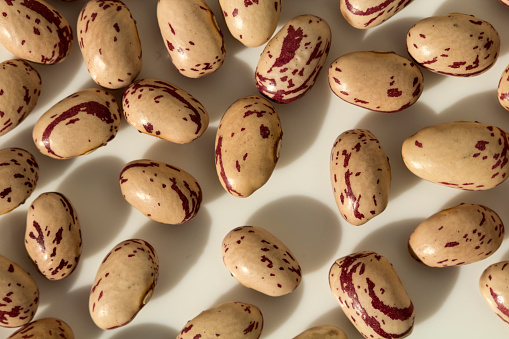The first Diabetes Cellular Product
drug
Herbal Cellular Concentrates
Our goal is to reach as many people around the globe as possible and make their lives healthier. VitalangBio scientists studied traditional herbalists and unfolded their full potential by improving the formulas and preparing the herbs differently.
The Herbal Cellular Concentrates proved their effectiveness: thanks to the new drying and blending methods, they are up to 15 times more effective than other herbal supplements.
We are happy to see that our clients get better and do it faster and at a much more affordable price than they would use pharmaceutical drugs.
The research continues in our laboratory, where we create new Herbal Cellular concentrations in response to clients’ requests. After all, we aim to make the world healthier, one diagnosis at a time.

Diabetes is a group of endocrine system illnesses associated with failures of glucose consumption and, therefore, the development of either absolute or relative insulin insufficiency. This leads to hyperglycemia—a steady growth of blood sugar levels.
Our research team, led by Alexander Spytsin, developed an effective Herbal Cellular Concentrate to control blood sugar levels. Crushing herbs into 2-micrometer particles, the dimension of a cell wall significantly increases their bioavailability. This blend is easy for the human digestive system to absorb, so our Herbal Cellular Concentrate is six times more effective than the same herbs in the form of that infusion.
Chicory provides a range of positive effects for patients with type 2 diabetes.

• Slightly decreases blood sugar levels due to inulin content, reducing significant glucose fluctuations. Please notice that the impact of inulin on blood sugar levels is overestimated: there is no way you should neglect prescribed medicine while taking chicory.
• Increases metabolism, enabling weight loss; highly recommended for patients with type 2 diabetes who have excess weight.
• Provides a toning effect and boosts energy levels thanks to the high content of vitamins B and C.
• Has a positive effect on cardiac function, kidneys, blood vessels, and the nervous system.
• Its infusion and brew increase appetite and control digestive functions.
• An abundance of vitamins and microelements helps to improve the immune system.
Equisetum arvense is one of the most effective solutions to control blood sugar levels and prevent illness development. Equisetum is well-known in traditional medicine: it not only stabilizes the blood sugar level but also can be used for a wide range of purposes:
• as a hemostatic agent;
• as an inflammatory and antibacterial treatment;
• to stabilize metabolism;
• to stabilize the production of the hormone.
Helianthus tuberous roots
Helianthus tuberous roots are rich with inulin (16-18%), the natural equivalent of insulin, which enables glucose utilization in the human body. Long-term consumption of Equisetum lowers blood sugar levels.
Helianthus tuberosus is a herbaceous perennial plant growing to 1.5–3 m (4 ft 11 in – 9 ft 10 in) tall with opposite leaves on the lower part of the stem but alternate towards the top. The leaves have a rough, hairy texture. Larger leaves on the lower stem are broad ovoid-acute and can be up to 30 cm (12 in) long. Leaves higher on the stem are smaller and narrower.

The flowers are yellow and produced in capitate flowerheads, which are 5–10 cm (2.0–3.9 in) in diameter. They have 10–20 ray florets and 60 or more small disc florets. The flowers are briefly fragrant, giving off a light, vanilla-chocolate perfume.
The tubers are often elongated and uneven, typically 7.5–10 cm (3.0–3.9 in) long and 3–5 cm (1.2–2.0 in) thick. They vaguely resemble a ginger root in appearance and have a crisp and crunchy texture when raw. They vary in color from pale brown to white, red, or purple.
Burdock root
Burdock root stimulates the pancreas ferments production, has a pancreas ferments production, robin l characteristics, and regulates characteristics; burdock root has been used as a meal and medicinal drug for hundreds of years in diverse ways, including as a diuretic for useful resource digestion. It comes from the plant burdock (Arctium lappa), which is associated with daisies and sunflowers. Burdock is native to North Asia and Europe, but it is grown in different parts of the world, including North America.
The roots of the burdock plant are believed to be the most useful part of the plant. While clinical studies are confined at this time, burdock root contains numerous vitamins, antioxidants, and inulin, which can be acknowledged to assist with situations like pores and skin disorders, infection, digestion, and more.
Health Benefits
Burdock root is regularly eaten, yet it can also be dried and steeped into a tea. It works nicely as a supply of inulin, a prebiotic fiber that aids digestion and improves intestine fitness. Additionally, this root includes flavonoids (plant vitamins), phytochemicals, and antioxidants, which can be acknowledged to have fitness blessings.
In addition, burdock root can offer different blessings like:
Reduce Chronic Inflammation
Burdock root contains antioxidants, such as quercetin, phenolic acids, and luteolin, that could help shield cells from free radicals and lessen infection in the body.
Green beans shells
Green bean shells are effective in treating and preventing diabetes. They help stabilize the metabolism and maintain normal blood sugar levels.
Green beans are young, unripe fruits of various common bean cultivars (Phaseolus vulgaris). However, immature or young pods of the runner bean (Phaseolus coccineus), yardlong bean (Vigna ungSesquipedal’spSesquipedal, and hyacinth beans (Lablab purpureus) were misused similarly.
Green beans are known by many common names, including French beans (or the French: haricot vert), string beans (although most modern art “tie s an “e “strip” glass”), strips glasses, or simp, ps. Inthe Philippines, they are also known as Baguio beans or habichuelas, dwhich distinguishesthem from yardlong beans.
Green beans are distinguished from the many other varieties of beans in that they are harvested and consumed with their enclosing pods before the bean seeds inside have fully matured. Analogous practice is the harvest and consumption of unripened pea pods, as with snow peas or sugar snap peas.
Blueberry leaves
Blueberry leaves help lower blood sugar and urine sugar levels and increase metabolism.
Galega officinalis is a medical herb that lowers blood sugar levels for prediabetes and type-2 diabetes patients.

Blueberries are a widely distributed group of perennial flowering plants with blue or purple berries. Ey are classified in the section Cyanococcus within the genus Vaccinium. ccinium also includes cranberries, bilberries, huckleberries, and Madeira blueberries. mmercial blueberries—wild (lowbush) and cultivated (highbush)—are all native to North America. The highbush varieties were introduced to Europe during the 1930s.
Blueberries are usually prostrate shrubs that can vary in size from 10 centimeters (4 inches) to 4 meters (13 feet) in height. The commercial production of blueberries, the species with small, pea-size berries growing on low-level bush”s ” “ea ” known as “lo” s” ” ” below ” “y” o” m” us” w”th “wi”d”), “w.” “c” contrast,e the species with larger berries growing on taller, cultivated bush”s “r” ” wn as “hi”h”us” ” b” berries.
An “ad” is t.” I,” the leading producer of lowbush blueberries, while the United States produces the world blueberries.
Inula
Inula is rich in insulin (up to 44%). e fructose generated by its hydrolysis is digested using an insulin-independent mechanism. This leads to carbohydrate metabolism optimization, especially in the case of hypoxia and diabetes. Ula-based medicines have a mild yet long-term anti-hypoxic effect caused by inulin, saponins, organic acids, selenium, and vitamin E.

The research results show that Bupleurum defends pancreatic β-cells and hepatocytes, thus easing diabetes due to its antioxidant and anti-inflammatory effects.
Doctors and patients are waiting for changes in the domestic pharmaceutical industry and the rapid replacement of expensive imported drugs with high-quality domestic medicines.
Novosibirsk scientists also offer their solutions. rdock root, horsetail, licorice, chamomile, and echinacea: the medicinal properties of plants in the North Caucasus and Altai have long been proven. e activity of useful substances increase 6-8 times if the plants are dri”d ” nd shed.
“We”o” e” the cell and acti” at ” “ub”substancesexp” a”d Alexander and chief research an,d production, association researcher. ─ We add components that create synergy, othering othother’sdocrine, vascular, and even tumor diseases. We have made available what nature has hidden from you. Esese are the drugs” o” ” ” future.”

T”Th ” laboratories of NPO Vector have developed a drug that can fight viruses. Issued on years, the technology was developed” i” in the 1980s.
“Ki”lwhi which double-strandedhe 1980sir basis, drugs were created with the broadest antiviral spectrum, ─ says Doctor of Biological Sciences Professor Yuri Alikin.
They cure all types of herpes and SARS, including coronavirus. The drug is unique, but it has been registered only for vetveterinarianslant-based medicines that are considered nutritional supplements. Ey ey requires years and millions of rubles to pass all the tests. Scientific scientists are confident that Western countries’ connections can be used to develop the Russian pharmaceutical industry.
Sergey Solovyov, director of the Research and Production Association, explained that we need technologies and monitoring systems to identify potential “po”nts” o” growth and “me”ha mechanismsor their”im “lelamentation
A”working group has been created at the SB RAS to assess how much we depend on imported drugsAccordingding to Academician Deputy Chairman of the SB RAS Mikhail Voevoda, it is necessary to understand the existing threats in this direction.
Support measures are being discussed. r example, innovative companies can organize co-working spaces and equip work platforms within the walls of scientific institutes.
Related: Lower Blood Sugar and Herbal Cellular Concentrate
There are opportunities in Novosibirs, such as a chance to join a medical cluster like Skolkovo, where they plan to use methods and drugs before registration in Russia. The research, certification, and implementation stage is the most protracted and “ex” stage.
“At”t” i” star ge, it is necessary to involve the state so that innovators can get the opportunity to test quickly and, in case of a positive test result, be included in existing retreat nt”pr” to tools O”g” orro Rojavapublic representative of the Agency for Strategic Initiatives on Technological Entrepreneurship, believes.
As for import substitution, many Russian companies are ready to replace foreign drugs and offer unique developments.
References
Berni Canani R, Pezzella V, Amoroso A, Cozzolino T, Di Scala C, Passariello ” (Ma” ch 2016). “Di”g”os” ng and Treating Intolerance to Carbohydr”te ” ” “Children”..”u” “i” nts. (3): 157. doi:10.3390/nu8030157. PMC 4808885. ID 26978392.
The Plant List, Helianthus tuberosus L.
Szewczyk, Aleksandra; Zagaja, Mirosław; Bryda, Jarosław; Kosikowska, Urszula; Stępień-Pyśniak, Dagmara; Winiarczyk, Stanisław; Andres-Mach, Marta (“2 Ma” ch 2019). “To”I” am”you’ree new possibilities for use in a suppl”me ” “ac “io n die ” A” a”l of A.”ic “lacallednd Environmental Medicine. (1): 24–28. doi:10.26444/aaem/102767. ISSN 1898-2263.”PM” D” 3″922024.
“He”I” nt” us tuberosus” t”usntuberousdistrientry-levelp from the North American Plant Atlas (NAPA). ota of North America Program (BONAP). 14. tri “ve”pr 26ril 26”He “i”nt” u ” t”eros”s“” ” ” “sm R.” s”urces Information Network (GRIN). ricultural Research Service (ARS), United States Department of Agriculture (USDA). trieved 11 DDeDecember11Purdue University Center for New Crops & Plants Products: Helianthus tuberosus
Dickinson, T.; Metzger, D.; Bull, J.; & Dickinson, R. (2004) ROM Field Guide to Wildflowers of Ontario. ronto: Royal Ontario Museum, p. 170
Inula 1897 illustration from FranKöhleKöhler’szinal-Pflanzen‘”zinafinalanzen
“Fl”n” C”(ed) 2009, “Gl”bal Compo”it ” ” “ecklist.” A”” h” ed from the original on 2014-12-0 and rretrieved2014-12-09.
Melderis, A. (2007). Handbook of British Flowering Plants. AD BOOKS. 271. BN 1-4067-6632-1. trieved 2009-04-13.Mie Nishimura, Tatsuya Ohkawara, Toshiyuki Kanayama, Kazuya Kitagawa, Hiroyuki Nishimura, Jun Nishihira,
Effects of the extract from roasted chicory (Cichorium intybus L.) root containing inulin-type fructans on blood glucose, lipid metabolism, and fecal properties, Journal of Traditional and Complementary Medicine,
Volume 5, Issue 3, 2015, Pages 161-167, ISSN 2225-4110,https://doi.org/10.1016/j.jtcme.2014.11.016.
Hegedűs C, Muresan M, Badale A, et al. SIRT1 Activation by Equisetum Arvense L. (Horsetail) Modulates Insulin Sensitivity in Streptozotocin-Induced Diabetic Rats. lecules. 20;25(11):2541. Published May 29ay 29.May 290.3390/molecules25112541
Mariadoss, A.V.A.; Park, S.; Saravanakumar, K.; Sathiyaseelan, A.; Wang, M.-H. Ethyl Acetate Fraction of Helianthus tuberose. tidiabetic and Wound-Healing Activities in iInsulin-resistant Human Liver Cancer and Mouse Fibroblast Cells. tioxidants 2021, 10, 99. tps://doi.org/10.3390/antiox 1001009
Ahangarpour A, Heidari H, Oroojan AA, Mirzavandi F, Nasr Esfehani K, Dehghan MohamAntidiabeticdiabetic, hypolipidemic and hepatoprotective effects orooroot’root’so-alcoholicoot’so-alcoholictract on nicotinamide-streptozotocin induced type 2 model of diabetes in male mice. icenna J Phytomed. 2017;7(2):169-179.
Tjokroprawiro A, Pikir BS, Budhiarta AA, Pranawa, Soewondo H, Donosepoetro M, Budhianto FX, Wibowo JA, Tanuwidjaja SJ, Pangemanan M, et al. Metabolic effects of onion and green beans oDiabab Hokutients. hoku J Exp Med. 1983 Dec;141 Suppl:671-6. dDoi10.1620/tjem.141.suppl_671. PMID: 639639BluebBlueberries’ctebBlueberries’ct Insulin Resistance and Glucose Intolerance. tioxidants (Basel). 16;5(4):44. Published Nov 29ov 29.Nov 290.3390/antiox5040044
Nagalievska M, Sabadashka M, Hachkova H, Sybirna N. Galega officinalis extract regulates the diabetes mellitus-related violations of proliferation, functions, and apoptosis of leukocytes. C Complement Altern Med. 2018;18(1):4. Published 2018 Jan 8. doi:10.1186/s12906-017-2079-3
Singh TN, Upadhyay BN, Tewari CM, TrmanagementN. management of diabetes mellitus (prameharacemosenula Cinnamomumnd and Cinnamomum tamala. c Sci Life. 85 Jul;5(1):9-16. ID: 22557492; PMCID: PMC3331436.


















2 thoughts on "The first Diabetes Cellular Product"